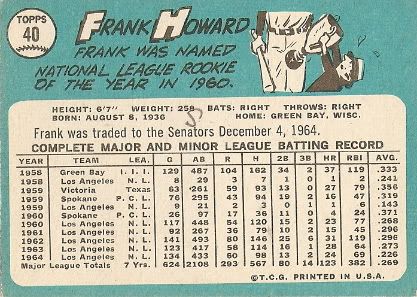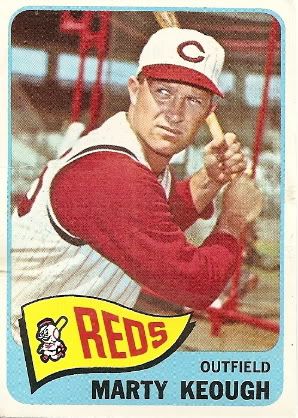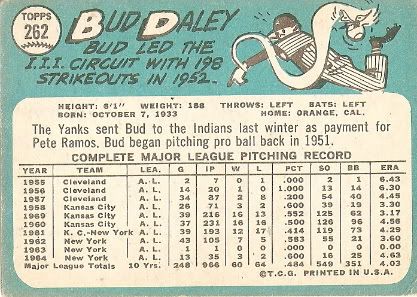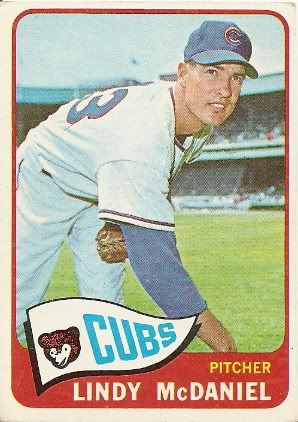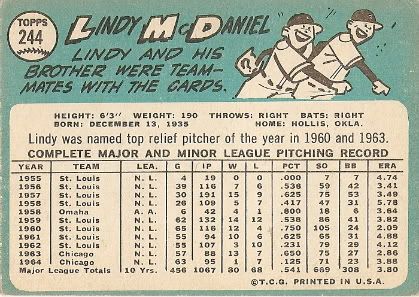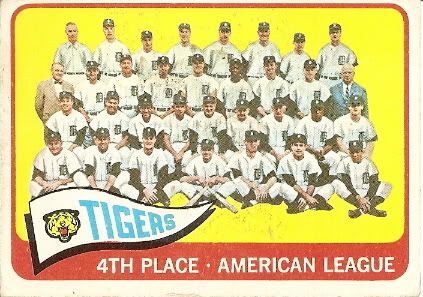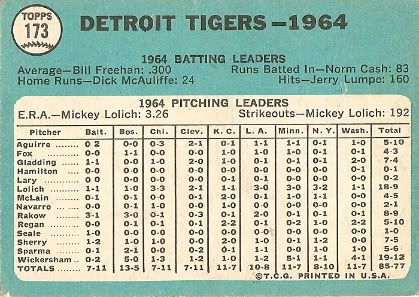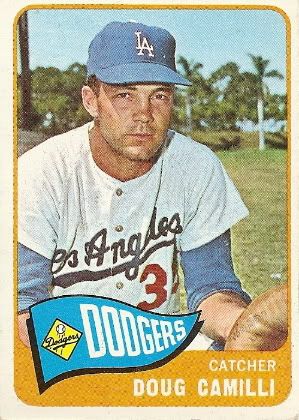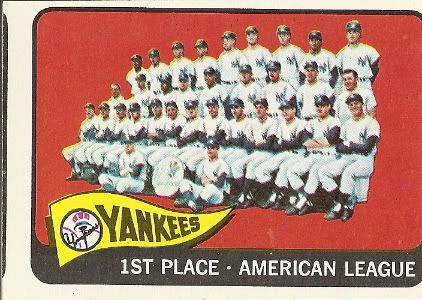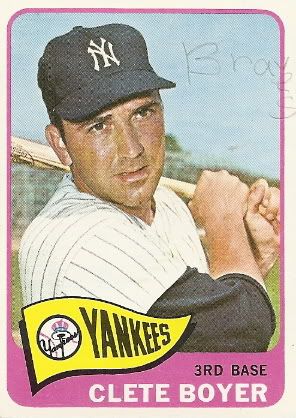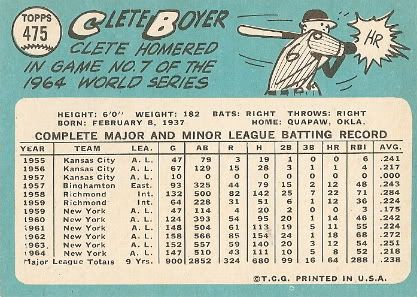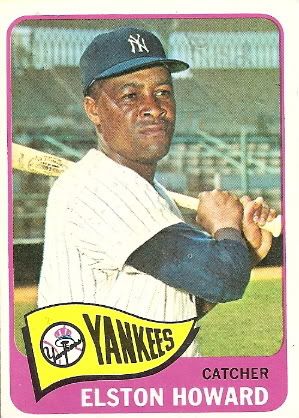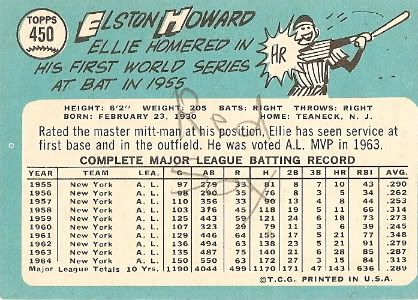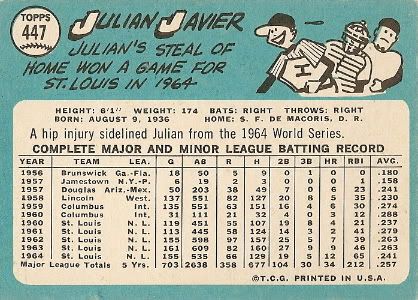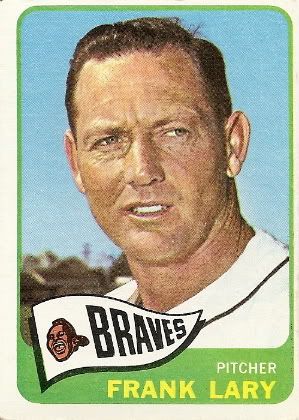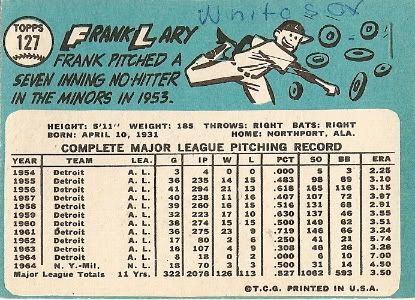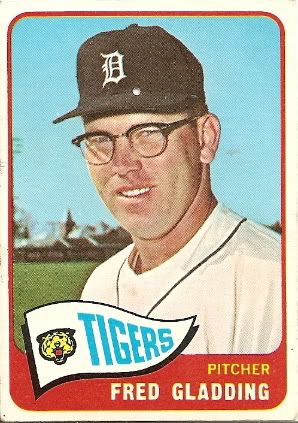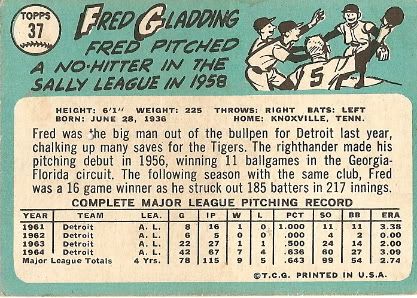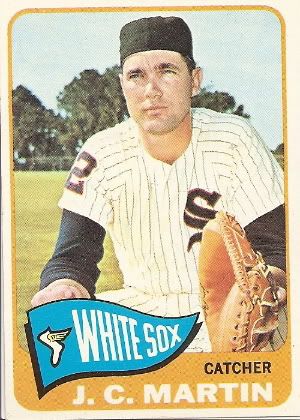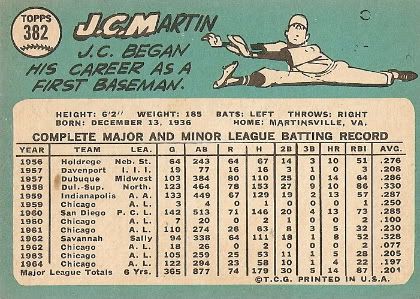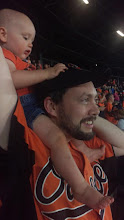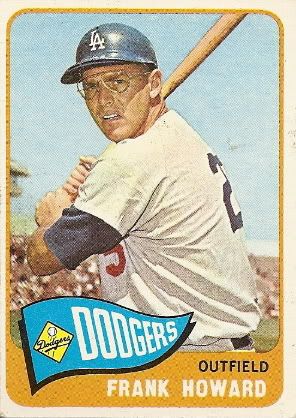
Okay, we jump ahead to February with HONDO! I received this incredibly badass card from Jason of the excellently named
Pack to the Future card blog. He also helped me fill some pesky needs from my 1986 Topps set, and in return I sent him some 1988 Donruss that he needed. Thanks, Jason!
I love
Frank Howard's glasses, his menacing expression of irritation, and his hulking frame. You or I could probably use that jersey as a night shirt!
Fun facts about Frank Howard:-Was born in Columbus, OH and was a two-sport All-American (baseball and basketball) at Ohio State University. The 6'8", 275-pounder was drafted by the NBA's Philadelphia Warriors, but chose to sign with the Dodgers in 1958.
-Earned cups of coffee in L.A. in each of his first two pro seasons, as he hit .335 with 80 home runs in the minors during that span.
The Sporting News named him the Minor League Player of the Year in 1959.
-Was tabbed as the 1960 N.L. Rookie of the Year, hitting .268 with 23 home runs and 77 RBI in 117 games.
-After playing only part-time in his sophomore year he finished ninth in MVP balloting in 1962. His batting line was an impressive .296 with 31 homers and 119 RBI. The Dodgers missed out on the pennant, however, falling in a three-game playoff to the Giants.
-Frank and his Los Angeles teammates bounced back to beat the Yankees in the 1963 World Series. In his only Fall Classic, the slugger hit a towering solo home run into the upper deck of Dodger Stadium in the fifth inning of
Game Four. The clout off of
Whitey Ford snapped a scoreless tie and helped L.A. to a 2-1 win and a series sweep.
-Despite hitting 123 longballs in five full seasons with the Dodgers, he was traded to the Senators prior to the 1965 season. In all, seven players and $100,000 changed hands, and Howard finally had the chance to play every day in a more hitter-friendly ballpark. He also received a fantastic nickname: "The Capital Punisher".
-Led Washington in home runs and RBI in each of his seven seasons there, and twice led the American League with 44 dingers (1968 and 1970); in 1969, his career-high 48 homers were off the lead by just one. Was a four-time All-Star and three-time Top Eight in MVP voting in D.C., and his 237 home runs are still a record for any hitter to play in the nation's capital.
-Hit an astounding 10 home runs in 20 at-bats from May 12-18, 1968, setting a record for circuit clouts in a single week.
-Following short stints with the Rangers (who relocated from D.C.) and Tigers, he retired in 1973. In parts of 16 seasons, Frank hit .273 with a .352 on-base percentage, 382 home runs, and 1,119 RBI. His OPS+ for his career was a hearty 142.
-A baseball "lifer", Hondo has managed the Padres (1981) and Mets (1983), with a 93-133 career record. He also coached for the Brewers, Mets, Mariners, Yankees, and Devil Rays, and managed minor league clubs for Milwaukee, Atlanta, and the Yankees. He has been a player development instructor for the Bronx Bombers since 2000.
